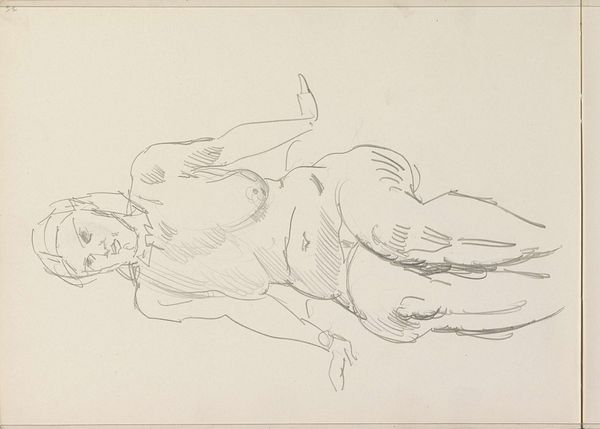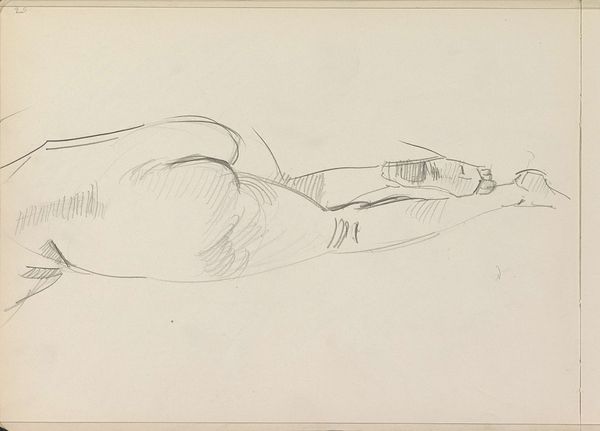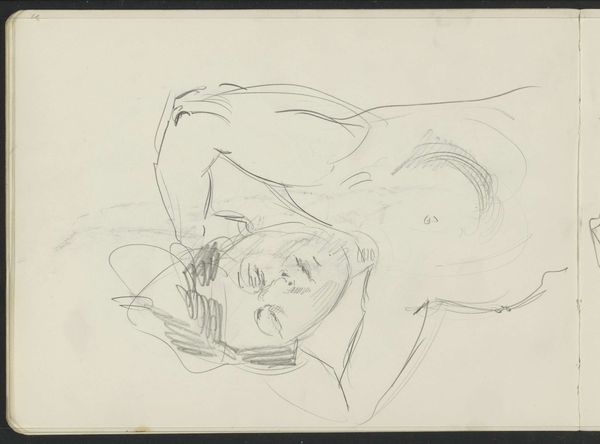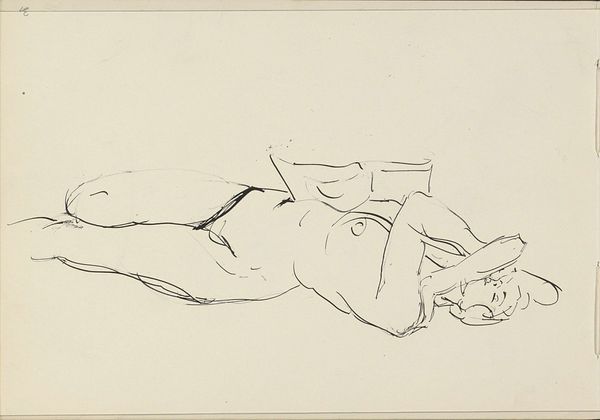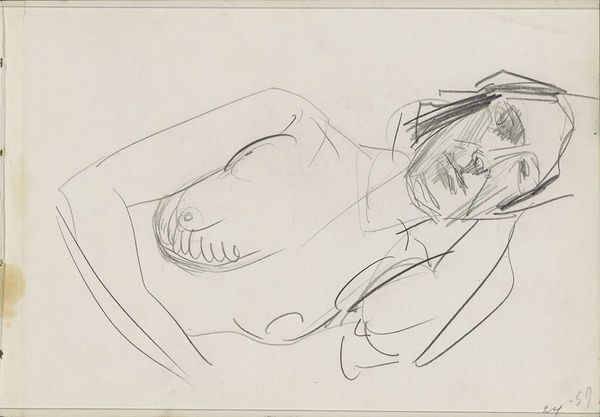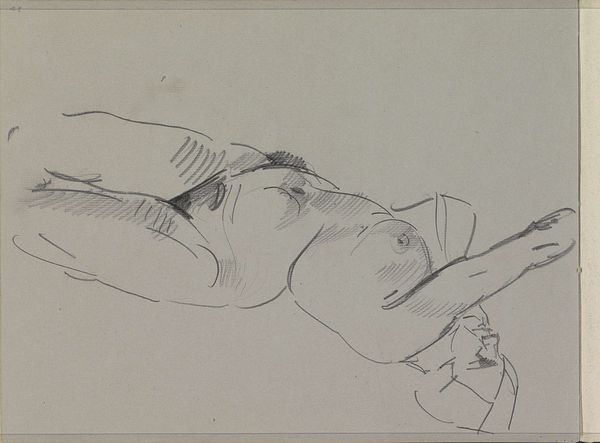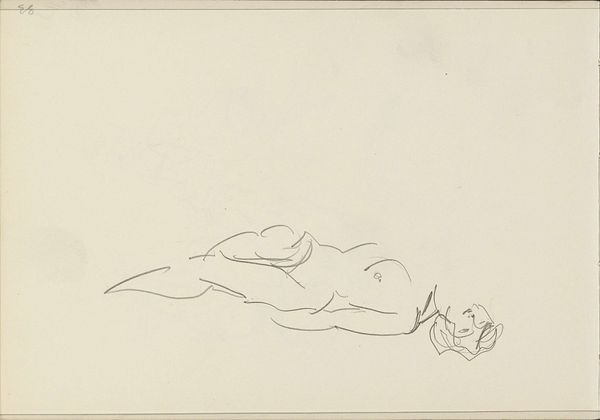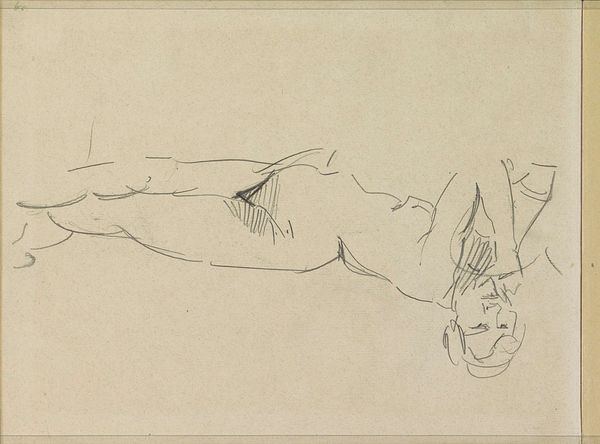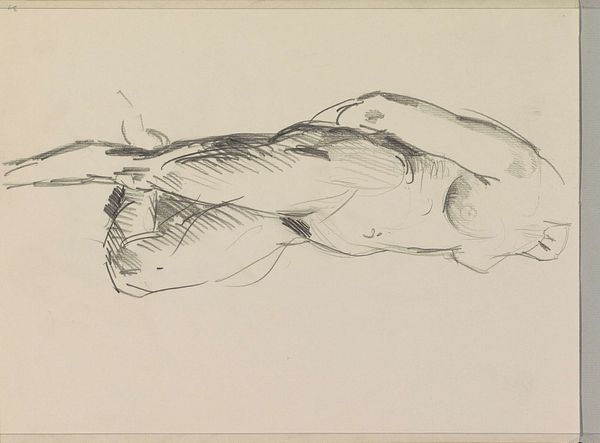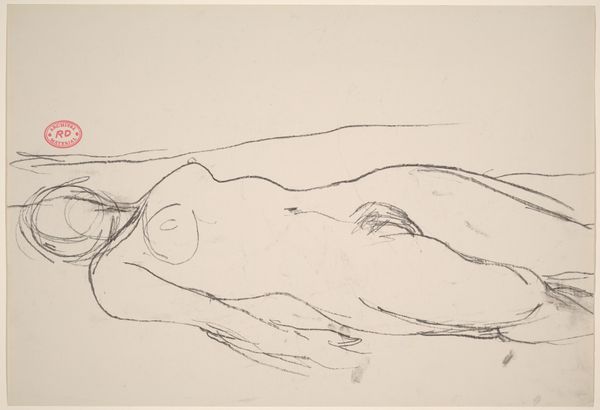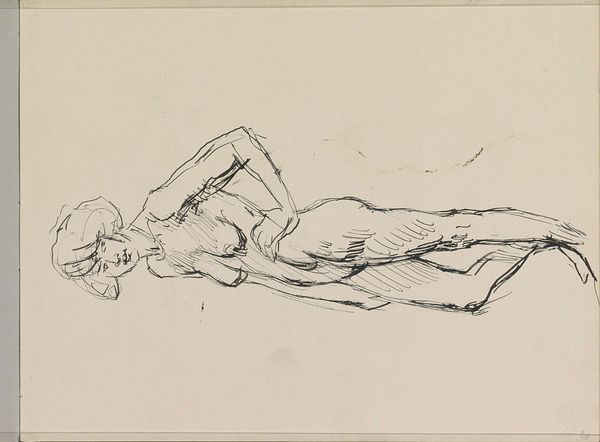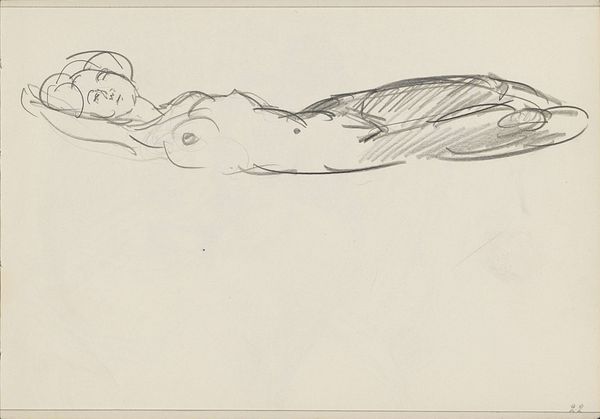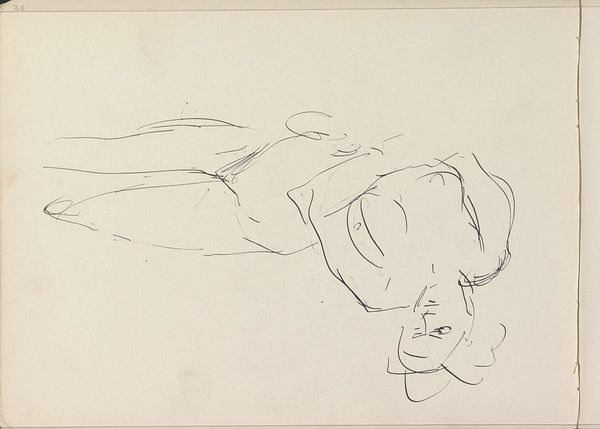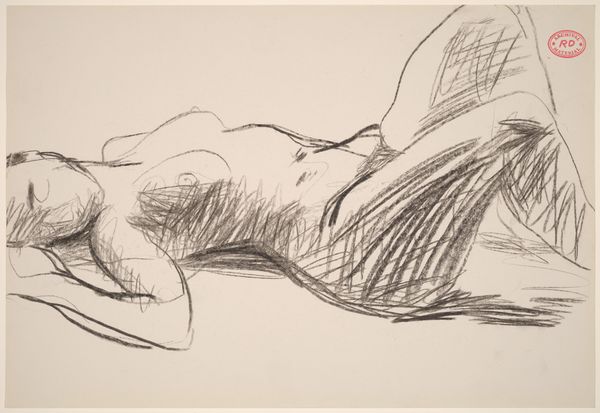
drawing, pencil
#
portrait
#
drawing
#
amateur sketch
#
light pencil work
#
pencil sketch
#
incomplete sketchy
#
figuration
#
idea generation sketch
#
pencil drawing
#
ink drawing experimentation
#
pencil
#
portrait drawing
#
pencil work
#
nude
#
initial sketch
Copyright: Rijks Museum: Open Domain
Editor: Here we have "Vrouwelijk naakt," or "Female Nude," a pencil drawing by Isaac Israels, created sometime between 1875 and 1934. It's a delicate sketch, almost ephemeral. What do you make of this piece? Curator: Well, as a materialist, I'm immediately drawn to the *process* evident here. Look at the varying pressure of the pencil – the artist experimenting with light and shadow through the simplest means. Pencil on paper, a readily available material, transformed into an object worthy of display in the Rijksmuseum. What kind of labor and what class dynamics are implicated in this transformation? Editor: That's interesting. I hadn't considered the social implications of the materials themselves. What about the *sketchiness* of the piece? It feels very unfinished. Curator: Precisely! And that challenges traditional notions of 'high art.' It raises questions about the value we place on 'finished' versus 'unfinished' work. Think about the labor involved in creating highly polished, academic nudes versus this quickly rendered sketch. Which is considered 'better,' and *why*? Whose labor is valued and whose is obscured? Editor: So you're saying the value isn't inherent, but rather, it's assigned through a system of production and consumption? Curator: Exactly! Even the way the artist has chosen to depict the figure – loose lines, almost disappearing in places – emphasizes the materiality of the pencil and the fleeting nature of the artistic process. How do you think the choice of leaving the figure rather unfinished impacts the viewer? Editor: I think it allows us to see the artist at work, grappling with form and light. It humanizes the process. I hadn’t considered the drawing’s implications on social constructs within the art market. Curator: Precisely, by focusing on material and process, we reveal power structures embedded within art.
Comments
No comments
Be the first to comment and join the conversation on the ultimate creative platform.
